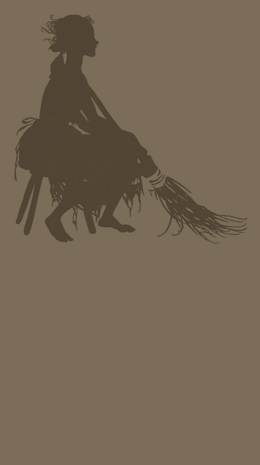
Once Upon a Time: Nursery Rhymes and Fairy Tales
Nursery Rhymes
Nursery rhymes (or “Mother Goose” rhymes, a name originally used in reference to fairy tales) are short poems and songs recited for children’s amusement. The bouncing rhythms and simple rhyming text make for easy memorization, and serve as a child’s introduction to the pleasures of language and poetry. The content is often silly or nonsensical. Several rhymes are purported to have dark historical meanings hidden in the text (i.e., “Ring Around the Rosie” is rumored to be about the Black Plague), but there is little or no evidence to back most of these claims. Ascribing hidden meanings is hardly necessary; many of the actual rhymes are blatantly violent or dark on their own: Mother Hubbard and her dog are starving, the old woman in the shoe beats her children, and when the bough breaks the baby falls out of the tree.
 |
Randolph Caldecott. The Hey Diddle Diddle Picture Book. London: F. Warne, ca. 1900. [zoom] English illustrator Randolph Caldecott (1846-1886) published several books of nursery rhymes, occasionally even making up new ones. The Caldecott Medal, which recognizes the most distinguished American picture book published each year, is named in his honor. |
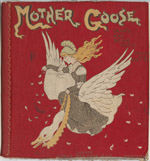 |
Mother Goose. London: Dean’s Rag Book Co., 1905. [zoom] Small children can be hard on books, as their sticky little hands are still developing fine motor skills. Printed cloth books like this were an early 20th century solution, much as board books are today. Gift of Toni Wilkinson in memory of Mary Hitchcock Wilde. |
Fairy Tales
Like nursery rhymes, fairy tales originated in the oral tradition. These stories -- full of heroes and villains, magic and violence, revenge and redemption -- were passed down from generation to generation before they were collected, revised and published by such famed folklorists as Charles Perrault, Jacob and Wilhelm Grimm, and Andrew Lang. It's no wonder that fairy tales are constantly being adapted, even today; young, unappreciated protagonists who are granted “happily ever after”s are both irresistible and universally relatable. All children feel like they're at the mercy of overbearing and capricious adults, and even grown-ups want things we aren't allowed to have. Don't we all see a bit of ourselves in Jack or Cinderella: smart, brave, beautiful, and destined for greatness?
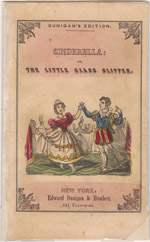 |
Cinderella; or, The Little Glass Slipper. New York: E. Dunigan, ca. 1840. [zoom] |
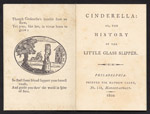 |
Cinderella: or, The History of the Little Glass Slipper. Philadelphia: M. Carey, 1800. Facsimile of the first Cinderella printed in the United States. [zoom] We have French author Charles Perrault (1628-1703) to thank for many of the best-known fairy tales: Cinderella, Sleeping Beauty, Puss in Boots, Blue Beard… all of which he collected and published in 1697 under the title Histoires ou contes du temps passé, avec des moralités: Contes de ma mère l'Oye ( Stories or Tales from Times Past, with Morals: Tales of Mother Goose). As a member of the Académie française, Perrault lent the stories an intellectual cachet that paved the way for future folklorists. |
 |
Jacob Grimm and Wilhelm Grimm. Kinder- und Haus-Märchen. Berlin: Bei G. Reimer, 1825. [zoom] |
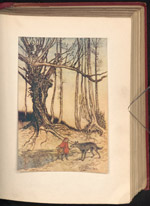 |
Jacob Grimm and Wilhelm Grimm. The Fairy Tales of the Brothers Grimm. Illustrated by Arthur Rackham. London: Constable & Company, Ltd., 1909. [zoom] Academics, linguists, librarians and folklorists, the Brothers Grimm – Jacob (1785–1863) and Wilhelm (1786–1859) – collected and published hundreds of stories in an effort to preserve German culture. Among the tales they made famous are Little Red Riding Hood, Snow White, Hansel and Gretel, the Frog Prince, and Rapunzel. Modern readers would be surprised by the violence and cruelty of these stories in their original versions; for example, Red Riding Hood gets eaten by the wolf, with no huntsman to rescue her. |
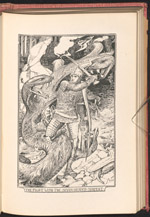 |
Andrew Lang. The Pink Fairy Book. Illustrated by H.J. Ford. New York, London [etc.]: Longmans, Green, and Co., 1897. [zoom] Additional images:  
Scottish author and anthropologist Andrew Lang (1844–1912) published 12 collections of fairy tales from all over the globe, each titled with a different color. For many of the 437 stories it was their first appearance in English. |
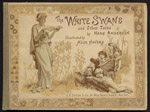 |
Hans Christian Andersen. The White Swans and Other Tales. New York: E.P. Dutton & Co., ca. 1885. [zoom] Additional images: 
|
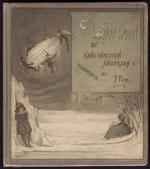 |
Hans Christian Andersen. The Snow Queen. Illustrated by T. Pym. London: Wells Gardner, Darton & Co., 1880s. [zoom] The fairy tales of Danish author Hans Christian Andersen (1805-1875) are original stories, not folklore; but many have endured in popularity to the point that they’ve attained the same status as the traditional tales. Among his contributions to the genre are The Little Mermaid, The Snow Queen, Thumbelina, The Ugly Duckling, and possibly the saddest story ever written for children: The Little Match Girl. |
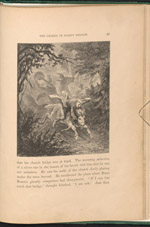 |
Washington Irving. The Hudson Legends. New York: G.P. Putnam, 1864. [zoom] Like Andersen, American author Washington Irving (1783-1859) composed original stories that have become legends. His Rip Van Winkle and Legend of Sleepy Hollow bring the fairy tale tradition to a new setting: rural Dutch settlements in the newly-established New York State. |